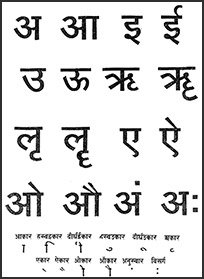Brimhana, Bṛṃhaṇa: 12 definitions
Introduction:
Brimhana means something in Hinduism, Sanskrit, Marathi. If you want to know the exact meaning, history, etymology or English translation of this term then check out the descriptions on this page. Add your comment or reference to a book if you want to contribute to this summary article.
The Sanskrit term Bṛṃhaṇa can be transliterated into English as Brmhana or Brimhana, using the IAST transliteration scheme (?).
In Hinduism
Ayurveda (science of life)
Dietetics and Culinary Art (such as household cooking)
Source: Shodhganga: Dietetics and culinary art in ancient and medieval IndiaBṛṃhaṇa (बृंहण) is a particular dietetic effect which “promotes health” according to the 17th century Bhojanakutūhala (dravyaguṇāguṇa-kathana), and is commonly found in literature dealing with the topics of dietetics and culinary art, also known as Pākaśāstra or Pākakalā.—Accordingly, the dietetic effect bṛṃhaṇa is associated with the following conditions: Food utensils made of Rambhāpatra (plantain leaf).
Unclassified Ayurveda definitions
Source: Wisdom Library: Āyurveda and botanyBṛṃhaṇa (बृंहण, “building”).—One of the six Upakramas, or ‘therapeutic measures’.—It is a Sanskrit technical term used through Ayurvedic (Indian medicine) literature such as the Carakasaṃhitā. The six Upakramas represent basic Ayurvedic therapies. The Bṛṃhaṇa treatment refers to a “nourishing therapy” and aims to nourish the human body and tissue through methods such as heavy diets and warm baths.
Source: archive.org: Vagbhata’s Ashtanga Hridaya Samhita (first 5 chapters)Bṛṃhaṇa (बृंहण) refers to “strengthening”, as mentioned in verse 4.29-31 of the Aṣṭāṅgahṛdayasaṃhitā (Sūtrasthāna) by Vāgbhaṭa.—Accordingly, “[...] If (a patient) has been debilitated by medicine, strengthening [viz., bṛṃhaṇa] (him) gradually by food such as rice, sixty-day-old rice, wheat, mung-beans, meat, and ghee—(which), in combination with cardiac and stomachic remedies, (is) promotive of appetite and digestion—as well as by inunctions, massages, baths, and purgative and lubricant enemas (is) wholesome. Thus he recovers comfort, intensity of all the fires, faultlessness of intellect, colour, and senses, potency, (and) longness of life”.
Source: gurumukhi.ru: Ayurveda glossary of termsBṛṃhaṇa (बृंहण):—All procedures and treatment which increase body weight and strength is called Briṃhana. This therapy is indicated for emaciated, weak and debilitated and for those in convalescence from chronic illness like mal-absorption , tuberculosis, anemia. Is reverse of reduction. This therapy consisting of rich diet, tonic herbs, rest and relaxing lifestyle. Food prepared with ghee, butter, seasame oil, milk, raw sugar and joggery.
Source: National Mission for Manuscripts: Traditional Medicine System in IndiaBṛṃhaṇa (बृंहण) refers to “building” and is the action (karma) associated with Guru (“heavy”): one of the twenty Śārīraguṇa (or Gurvādiguṇa), which refers to the “twenty qualities of the body”—where guṇa (property) represents one of the six divisions of dravya (drugs).—Śārīraka-guṇas are twenty in number. There are ten guṇas with their opposite guṇas. [...] Guru (“heavy”) has the predominant bhūta (element) of earth, water and the associated actions of “building/bṛṃhaṇa”; while Laghu (“light”) has the predominant bhūta (element) of fire, air, ether, space and is associated with the action “reducing/laṅghana”.

Āyurveda (आयुर्वेद, ayurveda) is a branch of Indian science dealing with medicine, herbalism, taxology, anatomy, surgery, alchemy and related topics. Traditional practice of Āyurveda in ancient India dates back to at least the first millenium BC. Literature is commonly written in Sanskrit using various poetic metres.
Vyakarana (Sanskrit grammar)
Source: Wikisource: A dictionary of Sanskrit grammarBṛṃhaṇa (बृंहण).—Keeping: preservation;cf. क्रमादतो-प्यृग्यजुषां च बृंहणम् । बृंहणं संधारणम् (kramādato-pyṛgyajuṣāṃ ca bṛṃhaṇam | bṛṃhaṇaṃ saṃdhāraṇam) ;Uvvata on R. Pr. XI. 37.

Vyakarana (व्याकरण, vyākaraṇa) refers to Sanskrit grammar and represents one of the six additional sciences (vedanga) to be studied along with the Vedas. Vyakarana concerns itself with the rules of Sanskrit grammar and linguistic analysis in order to establish the correct context of words and sentences.
Languages of India and abroad
Marathi-English dictionary
Source: DDSA: The Molesworth Marathi and English Dictionarybṛṃhaṇa (बृंहण).—n S A division or branch of medicine,--that which treats of Feeding, fattening, invigorating, corroborating, building up: opp. to karśana.
Marathi is an Indo-European language having over 70 million native speakers people in (predominantly) Maharashtra India. Marathi, like many other Indo-Aryan languages, evolved from early forms of Prakrit, which itself is a subset of Sanskrit, one of the most ancient languages of the world.
Sanskrit dictionary
Source: DDSA: The practical Sanskrit-English dictionaryBṛṃhaṇa (बृंहण).—a. Fostering, nourishing.
-ṇaḥ A kind of sweetmeat.
-ṇam 1 Nourishing.
2) The roaring noise (of an elephant); रथ्याघोषैर्बृंहणैर्वारणानाम् (rathyāghoṣairbṛṃhaṇairvāraṇānām) Śiśupālavadha 18.3.
Source: Cologne Digital Sanskrit Dictionaries: Cappeller Sanskrit-English DictionaryBṛṃhaṇa (बृंहण).—[adjective] & [neuter] making fat, strengthening, nourishing.
Source: Cologne Digital Sanskrit Dictionaries: Monier-Williams Sanskrit-English Dictionary1) Bṛṃhaṇa (बृंहण):—[from bṛṃh] mfn. ([from] [Causal]) making big or fat or strong, nourishing, [Suśruta]
2) [v.s. ...] m. a kind of sweetmeat, [Horace H. Wilson]
3) [v.s. ...] n. the act of making big etc., [ib.]
4) [v.s. ...] a means for making strong or firm, [Ṛgveda-prātiśākhya]
[Sanskrit to German]
Sanskrit, also spelled संस्कृतम् (saṃskṛtam), is an ancient language of India commonly seen as the grandmother of the Indo-European language family (even English!). Closely allied with Prakrit and Pali, Sanskrit is more exhaustive in both grammar and terms and has the most extensive collection of literature in the world, greatly surpassing its sister-languages Greek and Latin.
See also (Relevant definitions)
Starts with: Brimhanatva.
Ends with: Abrimhana, Atibrimhana, Dushpratibrimhana, Jalabrimhana, Paribrimhana, Pratibrimhana, Samabrimhana, Sambrimhana, Saparibrimhana, Udbrimhana, Upabrimhana, Vedopabrimhana.
Full-text (+2): Brimhanatva, Udvrimhana, Sambrimhana, Kasthulika, Parivirunkanam, Upabrimhana, Upavirunkanam, Jalabrimhana, Paribrimhana, Upappirummanam, Upakrama, Karshana, Brimhaniya, Palashapatra, Guru, Langhana, Laghu, Palasha, Kshudragokshura, Mauktika.
Relevant text
Search found 3 books and stories containing Brimhana, Bṛṃhaṇa, Brmhana; (plurals include: Brimhanas, Bṛṃhaṇas, Brmhanas). You can also click to the full overview containing English textual excerpts. Below are direct links for the most relevant articles:
Charaka Samhita (English translation) (by Shree Gulabkunverba Ayurvedic Society)
Chapter 22 - Lightening (langhana) and Roborant (brimhana) Therapies < [Sutrasthana (Sutra Sthana) — General Principles]
The Brahmanda Purana (by G.V. Tagare)
Chapter 33 - Characteristics of Sages and of Mantras < [Section 2 - Anuṣaṅga-pāda]
Brahma Sutras (Ramanuja) (by George Thibaut)
Sutra 1.1.2 < [First Adhyaya, First Pada]